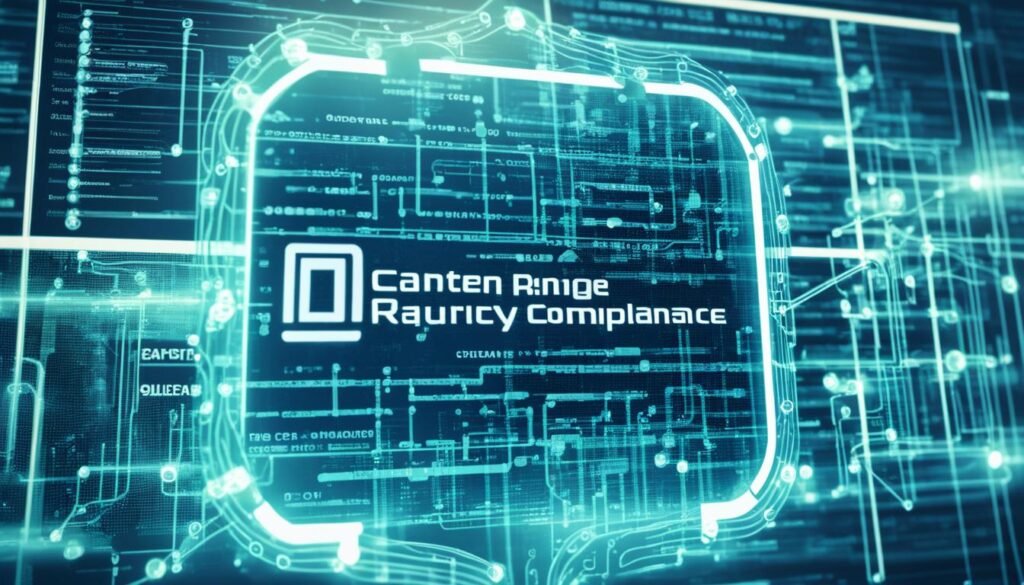In an era where technology reigns supreme, the digital landscape presents both opportunities and challenges. As businesses and individuals alike rely heavily on the virtual realm, the threat of cyber attacks looms larger than ever before. This is where the power of cyber insurance steps in, a shield against the evolving and complex world of cyber threats. Cyber insurance has emerged as a vital tool for businesses to mitigate potential financial losses and reputational damage caused by cyber incidents, such as data breaches, ransomware attacks, and other cyber-related risks.
By providing comprehensive coverage, cyber insurance helps organizations recover from the aftermath of a cyber attack, covering expenses for data recovery, legal fees, regulatory fines, notification costs, and even ransomware payments. Investing in cyber insurance is no longer a choice, but a necessity in the digital age, as it complements proactive cybersecurity measures and offers a holistic approach to risk management.
Key Takeaways
- Cyber insurance is a critical tool for businesses to mitigate financial and reputational risks from cyber incidents.
- Comprehensive cyber insurance coverage helps organizations recover from the aftermath of cyber attacks, covering various expenses.
- Cyber insurance complements proactive cybersecurity measures, providing a holistic approach to risk management.
- Investing in cyber insurance is a necessity in the digital age, as it protects against the evolving and complex world of cyber threats.
- Cyber insurance offers financial protection and coverage for a range of cyber-related expenses, including data recovery, legal fees, and regulatory fines.
Understanding the Cyber Threat Landscape
The ubiquity of cyber threats has transformed the way we perceive security. Cybercriminals, armed with sophisticated cyber attack techniques, can breach systems, steal sensitive digital assets, disrupt operations, and cause irreparable harm. From ransomware attacks holding data hostage to phishing schemes extracting confidential information, the virtual realm can be perilous.
The Ubiquity of Cyber Threats
The cyber threat landscape continues to evolve, with cybercriminals constantly developing new tactics to target organizations of all sizes. These cyber incidents can have a significant impact on businesses, leading to financial losses, reputational damage, and operational disruptions. Cyber risks have become ubiquitous, and addressing them is crucial for organizations to safeguard their digital assets and maintain business continuity.
Evolving Tactics of Cybercriminals
Cybercriminals are constantly adapting their methods, making it challenging for businesses to stay ahead of the threat evolution. From advanced data breaches to sophisticated phishing schemes, the cyber threats facing organizations are becoming increasingly complex and difficult to detect. Staying proactive and implementing robust cybersecurity measures is essential for building resilience against these virtual threats.
Impact of Cyber Attacks on Businesses
The impact of cyber attacks on businesses can be devastating, leading to significant financial losses, reputational damage, and operational disruptions. Digital challenges such as data breaches, ransomware attacks, and other cyber incidents can have a profound business impact, jeopardizing an organization’s ability to function effectively and maintain its competitive edge. Addressing these digital vulnerabilities and implementing proactive security measures is crucial for ensuring business continuity and protecting valuable digital assets.
What is Cyber Insurance?

Cyber insurance is specifically designed to address the unique risks associated with data breaches, ransomware attacks, and other cyber threats. It goes beyond traditional insurance policies, acknowledging the challenges posed by the digital age. Cyber insurance provides financial protection and coverage for a range of expenses, including data recovery and damage control, legal fees and regulatory fines, notification costs and credit monitoring, as well as ransomware payments. By offering comprehensive coverage, cyber insurance helps businesses recover from potential cyber incidents, safeguarding digital assets, mitigating financial losses, and preserving their reputation and operational continuity.
Definition and Purpose
Cyber insurance is a specialized form of coverage designed to protect businesses and individuals from the financial consequences of cyber threats, such as data breaches, network interruptions, and cyber extortion. The primary purpose of cyber insurance is to provide financial protection and assist with risk mitigation in the face of evolving cyber risks.
Key Benefits of Cyber Insurance Coverage
Cyber insurance offers a range of benefits that go beyond traditional insurance policies. These key benefits include:
- Data recovery and damage control in the event of a cyber incident
- Coverage for legal fees and regulatory fines associated with data breaches and other cyber events
- Assistance with notification costs and credit monitoring for affected parties
- Ransomware payments to regain access to critical systems and data
- Financial protection against business interruption and reputational damage
- Support for business continuity and digital asset safeguarding
By providing this comprehensive coverage, cyber insurance helps organizations navigate the complex and ever-evolving cyber threat landscape and mitigate the financial and operational risks associated with cyber incidents.
Common Cyber Insurance Misconceptions

One of the most prevalent misconceptions is that general liability insurance provides sufficient coverage for cyber incidents. However, general liability policies typically exclude cyber-related losses. Cyber insurance is specifically designed to address the unique risks associated with data breaches, ransomware attacks, and other cyber threats.
General Liability Insurance Covers Cyber Incidents
Another misconception is that strong IT security measures eliminate the need for cyber insurance. While implementing robust cybersecurity is crucial, it does not provide complete protection against evolving cyber threats. Cyber insurance acts as an additional layer of defense, helping businesses recover from potential cyber incidents by covering financial losses, legal expenses, and other associated costs.
Strong IT Security Eliminates the Need for Cyber Insurance
Additionally, some believe that cyber insurance is only necessary for large corporations, but small and medium-sized enterprises (SMEs) are equally vulnerable to cyber threats and can benefit from tailored cyber insurance solutions to navigate the financial burden of a cyber incident. SMEs can face significant financial burden and business disruption due to the high costs associated with data breaches, ransomware, and other cyber attacks.
Cyber Insurance is Only for Large Corporations
By addressing these common misconceptions, businesses of all sizes can recognize the necessity of cyber insurance as a critical component of their risk management strategy, providing the financial protection and cybersecurity measures needed to safeguard their digital assets and maintain business continuity in the face of evolving cyber threats.
Cyber Insurance Coverage

Cyber insurance provides comprehensive coverage that goes beyond traditional insurance policies. It covers the costs of data recovery and managing the ensuing damage from a cyber incident, ensuring a swift recovery and minimal business disruption. Additionally, cyber insurance shoulders the legal fees and regulatory fines that can arise from data breaches and other cyber events, offering financial relief and allowing organizations to focus on remediation efforts.
Notification Costs and Credit Monitoring
The coverage also includes the costs of notifying affected parties and providing credit monitoring services to those impacted by a data breach. This helps organizations fulfill their regulatory compliance obligations and mitigate the potential legal consequences and reputational damage associated with a cyber incident.
Ransomware Payments
Crucially, cyber insurance provides a lifeline by covering ransom payments in the event of a ransomware attack, freeing businesses from the clutches of extortion and enabling them to resume business continuity and data protection efforts.
Data Recovery and Damage Control
By addressing the financial burden of data recovery and damage control measures, cyber insurance helps organizations swiftly respond to and recover from a cyber incident, minimizing the impact on their operations and incident response capabilities.
Legal Fees and Regulatory Fines
Cyber insurance also covers the legal fees and regulatory fines that can arise from data breaches and other cyber events, providing the necessary financial relief and allowing organizations to focus on remediation efforts rather than being consumed by the legal and financial consequences of the incident.
Proactive Cybersecurity and Cyber Insurance

One of the most valuable aspects of cyber insurance is its role in proactive cybersecurity. As cyber threats evolve and adapt, being equipped with a comprehensive cyber insurance policy empowers organizations to stay ahead. It prompts businesses to adopt robust cybersecurity measures, enhancing their cyber resilience against potential attacks.
Encouraging Robust Cybersecurity Measures
Cyber insurance encourages the implementation of security best practices, such as regularly updating software, implementing multi-factor authentication, and providing security awareness training for employees. By fostering a culture of cybersecurity and staying proactive in the face of evolving threats, organizations can significantly reduce their risk exposure and better protect their digital assets.
Staying Ahead of Evolving Threats
As the cyber threat landscape continues to evolve, cyber insurance plays a crucial role in cyber defense and security enhancement. By encouraging the adoption of proactive cybersecurity measures, cyber insurance helps organizations maintain business continuity and incident prevention, while also supporting incident response efforts in the event of a cyber incident.
Cyber Insurance Underwriting Process

To navigate the dynamic cyber threat landscape, insurers employ a rigorous underwriting process to assess the risks and establish tailored coverage for prospective policyholders. This approach involves two critical components: establishing risk profiles and evaluating digital footprints.
Establishing Risk Profiles
Insurers begin by carefully examining the type of business, its size, and the inherent risks it faces. This comprehensive evaluation includes analyzing the organization’s cybersecurity posture, the robustness of its IT infrastructure, the effectiveness of its data management practices, and the implementation of security protocols. By understanding the business risk evaluation, insurers can determine the appropriate underwriting criteria to minimize their own risk exposure while providing the policyholder with risk minimization strategies.
Assessing Digital Footprints
Alongside establishing risk profiles, insurers conduct a thorough assessment of the prospective policyholder’s digital footprint. This process involves examining the organization’s online presence, digital assets, and its overall cybersecurity posture. By gaining a comprehensive understanding of the digital footprint assessment, insurers can tailor the customized coverage to address the specific needs and risk profiles of the organization.
Tailoring Coverage to Business Needs
The final step in the underwriting process is to tailor the policy to the unique requirements of the policyholder. Insurers leverage the insights gained from the risk profile and digital footprint assessment to optimize the coverage and ensure it aligns with the business and its dynamic risk environment. This approach allows for the policy tailoring and coverage optimization, providing the policyholder with a comprehensive solution that addresses their specific cybersecurity posture and IT infrastructure needs.
As the cyber threat landscape continues to evolve, the underwriting process must remain agile and responsive, adapting to the changing tactics of cybercriminals and ensuring the ongoing relevance and effectiveness of the cyber insurance coverage provided.
Cyber Security Alliances for Insurers

To maintain a pulse on the ever-changing cyber threat landscape, insurers need to establish alliances with cyber security services firms. These collaborations provide insurers with valuable insights into the latest methods of cyber attacks, enabling them to create more dynamic product boundaries and effectively manage the evolving risk environment.
Collaboration with Cyber Security Services Firms
Through these alliances, insurers can leverage the expertise of cyber security firms to gain a deeper understanding of the policyholder’s vulnerabilities, strengthen their security posture, and tailor the coverage to address the most pressing threats. By staying aligned with the rapidly changing tactics of cybercriminals, insurers can ensure the relevance and effectiveness of their cyber insurance offerings.
Offensive Security Assessments
As part of these collaborations, insurers can conduct offensive security assessments to identify potential weaknesses in the policyholder’s systems and networks. This proactive approach allows insurers to gain valuable threat intelligence and work alongside the policyholder to enhance their security posture.
Defensive Security Evaluations
In addition to offensive assessments, insurers can collaborate with cyber security firms to perform comprehensive defensive security evaluations. These evaluations help insurers understand the policyholder’s existing security measures, identify areas for improvement, and provide guidance on implementing effective defensive strategies.
Policy and Procedure Reviews
By reviewing the policyholder’s policies and procedures, insurers can gain a deeper understanding of the organization’s risk management practices, incident response planning, and regulatory compliance efforts. This holistic approach enables insurers to tailor their coverage to the specific needs of the policyholder, ensuring the relevance and effectiveness of their cyber insurance offerings.
Cyber Insurance for Small and Medium-sized Enterprises

Contrary to popular belief, cyber threats do not discriminate based on the size or industry of a business. Small and medium-sized enterprises (SMEs) are increasingly targeted by cybercriminals due to their potential vulnerabilities. SME cyber insurance is just as crucial as it is for large corporations, helping SMEs navigate the financial burden of a cyber incident and allowing them to recover and continue operations without significant disruption.
Tailored Coverage Solutions
Tailored cyber insurance policies can be designed to cater to the specific needs and budget of each SME, making comprehensive SME cyber insurance solutions accessible to businesses of all sizes. By understanding the unique risks and challenges faced by SMEs, insurers can provide coverage that addresses the SME cybersecurity and SME risk management requirements, ensuring the policyholder is adequately protected.
Affordability and Cost-Effectiveness
One of the key benefits of cyber insurance for SMEs is its affordability and cost-effectiveness. By offering cost-effective cyber insurance options, insurers empower SMEs to safeguard their digital assets, manage their cyber risks, and maintain business continuity in the face of evolving cyber threats. This financial protection for SMEs helps to alleviate the potential SME liability coverage and SME regulatory compliance concerns, ensuring the long-term sustainability and resilience of these businesses.
Cyber Insurance and Regulatory Compliance

Organizations operating in regulated industries often assume that compliance with industry-specific regulations is sufficient protection against cyber risks. However, cyber insurance regulatory compliance reveals that compliance does not guarantee immunity from cyber threats. Cyber insurance provides an extra layer of protection, helping organizations meet legal obligations, manage reputational risk management, and mitigate financial loss mitigation resulting from a cyber incident.
Addressing Industry-Specific Regulations
By addressing industry regulations and compliance requirements, cyber insurance ensures that businesses in regulated sectors maintain comprehensive protection against the evolving cyber threat landscape. Cyber insurance policies can be tailored to address industry-specific regulations, providing coverage for the unique residual cyber risks that may not be fully covered by compliance measures alone.
Mitigating Residual Risks
Cyber insurance plays a crucial role in data breach response, incident management, and third-party risk mitigation, complementing an organization’s compliance-aligned coverage. In the event of a cyber incident, such as a data breach or ransomware attack, cyber insurance can cover the costs of regulatory fines and provide the necessary resources for incident response and recovery, ensuring the organization’s compliance and minimizing the impact on its reputation and finances.
Cyber Insurance Trends and Future Outlook

As the economic shift from brick and mortar to digital commerce continues, the need for comprehensive digital protection has become paramount. Cyber insurance is poised to evolve, with emerging trends such as embedded insurance and technological advancements shaping the future of the industry.
Embedded Insurance and Technological Advancements
Embedded insurance, where cyber coverage is seamlessly integrated into various digital products and services, is expected to become more prevalent, catering to the growing demand for holistic risk transfer solutions. This trend aligns with the rapid growth of the cyber insurance market and the increasing reliance on digital commerce protection.
Evolving Underwriting Practices
At the same time, insurers will need to continuously adapt their underwriting practices to stay ahead of the rapidly changing cyber threat landscape. By leveraging data analytics, artificial intelligence, and dynamic risk assessment models, insurers can provide more responsive and tailored cyber insurance coverage, ensuring their products remain relevant and effective in protecting businesses in the digital age.
The cyber insurance industry transformation is driven by the need to address the evolving cyber risks and the growing demand for adaptive coverage that can keep pace with technological innovations and the future cyber insurance outlook.
Cyber insurance, also known as cyber liability insurance, is a type of insurance policy that provides coverage for businesses against the financial losses associated with cyber risks such as data breaches, cyber attacks, and electronic data breaches. Cyber insurance policies typically offer both first-party coverage, which covers the costs related to data protection, data recovery, and business interruption, as well as third-party coverage, which covers liability and legal expenses arising from breaches of personally identifiable information. By purchasing cyber insurance, businesses can benefit from coverage that traditional insurance policies, like property insurance or liability insurance policies, may not provide. In the event of a cyber event, cyber insurance can help cover the cost of data breach response, legal fees, and any regulatory fines or penalties. With cyber insurance coverage, businesses can mitigate the risk of cyber incidents and safeguard their operations against potential financial losses.
Also Read: Otto Insurance: Your Trusted Protection Partner
Conclusion
In a world where the digital and physical realms are increasingly intertwined, investing in cyber insurance is no longer a choice—it’s a necessity. Cyber insurance has emerged as a vital tool for businesses of all sizes to mitigate the financial, operational, and reputational risks posed by cyber threats. By providing comprehensive coverage for data recovery, legal expenses, regulatory fines, and other cyber-related costs, cyber insurance empowers organizations to navigate the complexities of the digital landscape with confidence.
As the cyber threat landscape continues to evolve, the role of cyber insurance in proactive risk management and cybersecurity will only become more crucial. Businesses must prioritize cyber insurance as an integral component of their overall risk management strategy, ensuring they are prepared to defend their digital assets and maintain business continuity in the face of the ever-evolving cyber threats.
Embracing cyber insurance is no longer a choice, but a fundamental step in safeguarding the future of any organization operating in the digital realm. By leveraging the protection and coverage offered by cyber insurance, businesses can bolster their cybersecurity defenses, minimize the impact of cyber incidents, and emerge stronger and more resilient in the ever-changing digital world.
FAQs
Q: What is cyber insurance and why is it important?
A: Cyber insurance is a type of insurance that covers businesses and individuals against internet-based risks and often provides coverage for cyber liability, data breaches, and other cyber-related incidents. It is important as it helps protect your digital assets and financial well-being.
Q: How does cyber insurance work?
A: Cyber insurance works by providing financial support in the event of a cyber-related incident. When a covered event occurs, such as a data breach or cyber attack, the policyholder can file a claim to receive compensation for the losses incurred.
Q: What does cyber insurance cover?
A: Cyber insurance typically covers expenses related to data breaches, cyber extortion, legal fees, regulatory fines, and business interruption caused by cyber incidents. It may also provide coverage for liability claims resulting from cyber-related issues.
Q: How much does cyber insurance cost?
A: The cost of cyber insurance can vary depending on factors such as the size of your business, the level of coverage required, and the industry you operate in. On average, cyber insurance can range from a few hundred to several thousand dollars per year.
Q: Do I need cyber insurance for my business?
A: If your business collects, stores, or processes sensitive data such as customer information or payment details, or relies heavily on digital systems for its operations, then having cyber insurance is highly recommended to protect against cyber risks.
Q: What is the difference between first-party and third-party coverage in cyber insurance?
A: First-party coverage in cyber insurance protects your business directly against losses from cyber incidents, such as data breaches or cyber attacks. Third-party coverage, on the other hand, covers liability claims from external parties affected by a cyber incident involving your business.
Q: How can cyber insurance help in risk management?
A: Cyber insurance can assist in risk management by transferring some of the financial risks associated with cyber incidents to the insurance company. This can help businesses mitigate the potential financial impact of cyber-related events and improve their overall risk management strategy.
Source Links
- https://www.linkedin.com/pulse/cyber-insurance-demystified-your-shield?trk=organization_guest_main-feed-card_feed-article-content
- https://www.linkedin.com/pulse/demystifying-common-cyber-insurance-misconceptions
- https://www.propertycasualty360.com/2023/06/16/demystifying-cyber-insurance-the-required-data-to-insure-at-scale/




